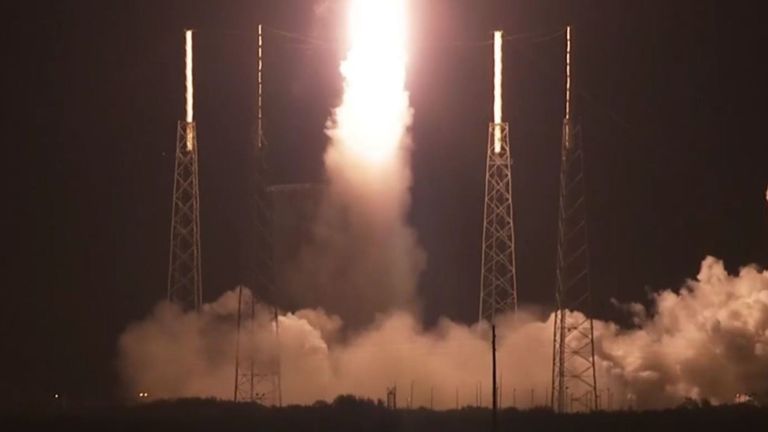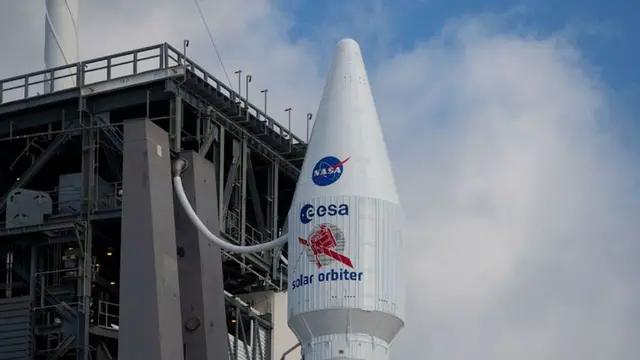The Solar Orbiter has blasted off from Florida on its way to unlock the mysteries of the Sun.
Nearly 1,000 scientists and engineers from Europe joined their US colleagues to watch the United Launch Alliance's Atlas V rocket set off on its £1.3bn mission.
People also watched from nearby roads and beaches.
The spacecraft, designed and built in Stevenage, will help scientists learn more about the Sun and its influence on the solar system.
The Solar Orbiter will take two years to reach the Sun before circling it 22 times, sending back high-resolution photos and measuring solar wind.
Scientists hope the mission will explain how the Sun's magnetic field is generated and how flares and other eruptions make energetic particles that lead to extreme space storms.
These storms can disrupt electrical equipment on Earth, as well as putting satellites at risk, so learning how to predict them could help protect such important infrastructure.
Ian Walters, project manager for Airbus Defence and Space, which designed and built the spacecraft, said: "We need to know how the sun affects the local environment here on Earth, and also Mars and the moon when we move there.
"We've been lucky so far the last 150 years" since a colossal solar storm last hit. "We need to predict that. We just can't wait for it to happen."
The Solar Orbiter will be 26 million miles away from the Sun at its closest approach every five months, closer than the planet Mercury.
Its heat shield has been tested to withstand 500C temperatures - hot enough to melt lead.
NASA's Parker Solar Probe is already in the area, having been launched 1.5 years ago but, while Parker Solar Probe has come closer to the sun - 11.6 million miles - it is not flying near the poles, which is where the Solar Orbiter comes in.

Image:The Solar Orbiter begins its two-year journey to the Sun. Pic: European Space Agency
Ahead of the launch, Dr Chris Lee, the UK Space Agency's chief scientist, said: "Understanding how our Sun works is a UK science strength, with teams investigating how solar storms build and grow.
"The Solar Orbiter represents the most significant UK investment in a space science mission for a generation."
At the end of the mission, which is expected to take 11 years, the Solar Orbiter will run out of fuel and power and communication with it will be lost.
After that, the spacecraft will become a piece of space junk and will continue to orbit the Sun somewhere between Mercury and Venus.
 简体中文
简体中文

